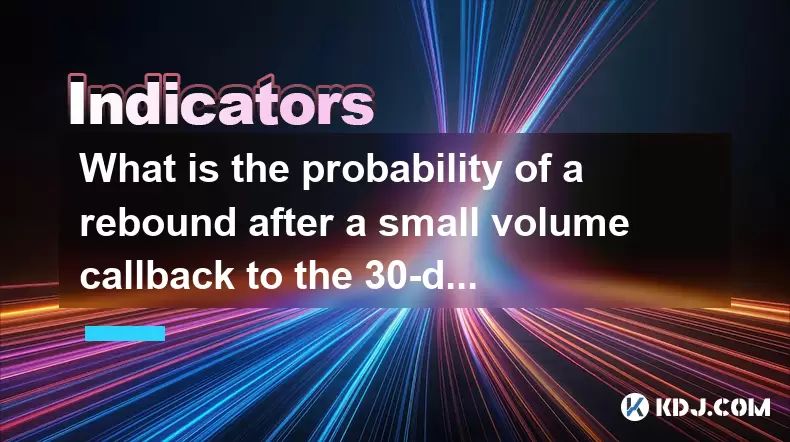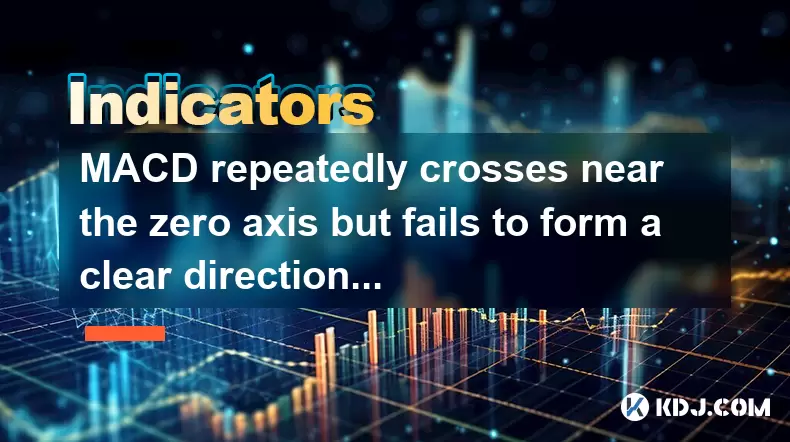-
 Bitcoin
Bitcoin $105,278.9859
4.61% -
 Ethereum
Ethereum $2,414.7741
8.20% -
 Tether USDt
Tether USDt $1.0007
0.05% -
 XRP
XRP $2.1600
7.53% -
 BNB
BNB $639.5433
3.75% -
 Solana
Solana $144.3830
9.37% -
 USDC
USDC $1.0001
0.02% -
 TRON
TRON $0.2742
3.84% -
 Dogecoin
Dogecoin $0.1640
8.57% -
 Cardano
Cardano $0.5811
7.49% -
 Hyperliquid
Hyperliquid $37.2466
5.28% -
 Sui
Sui $2.8243
14.84% -
 Bitcoin Cash
Bitcoin Cash $460.8816
2.22% -
 Chainlink
Chainlink $12.9580
11.75% -
 UNUS SED LEO
UNUS SED LEO $9.1359
1.23% -
 Avalanche
Avalanche $18.2302
10.30% -
 Stellar
Stellar $0.2463
7.80% -
 Toncoin
Toncoin $2.9151
7.18% -
 Shiba Inu
Shiba Inu $0.0...01163
9.79% -
 Hedera
Hedera $0.1532
14.01% -
 Litecoin
Litecoin $85.3310
6.29% -
 Monero
Monero $308.8215
2.90% -
 Ethena USDe
Ethena USDe $1.0007
0.03% -
 Polkadot
Polkadot $3.4259
9.42% -
 Dai
Dai $1.0002
0.01% -
 Bitget Token
Bitget Token $4.1742
3.19% -
 Uniswap
Uniswap $6.8272
8.53% -
 Pepe
Pepe $0.0...09939
12.29% -
 Pi
Pi $0.5358
6.03% -
 Aave
Aave $257.3092
12.83%
What is the probability of a rebound after a small volume callback to the 30-day moving average to get support?
A small volume pullback to the 30-day MA often signals a healthy correction, with historical data showing a 65-75% chance of a rebound in strong uptrends.
Jun 24, 2025 at 05:08 am

Understanding the 30-Day Moving Average in Cryptocurrency Trading
In cryptocurrency trading, the 30-day moving average (MA) is a widely used technical indicator that helps traders identify potential support and resistance levels. It calculates the average closing price of an asset over the last 30 days, smoothing out short-term volatility and providing a clearer view of the trend direction. Traders often use this line to assess whether a pullback might result in a rebound.
Key Insight: When prices fall back to the 30-day MA on low volume, it may indicate a healthy correction rather than a reversal.
What Does a Small Volume Callback Mean?
A small volume callback refers to a situation where the price retraces toward a key moving average—such as the 30-day MA—but does so with declining trading volume. This typically signals reduced selling pressure and suggests that the uptrend remains intact.
- Volume decline during a pullback indicates fewer sellers entering the market.
- Price approaching the 30-day MA may act as a psychological or technical support zone.
- Market structure remains bullish if higher lows and higher highs are still forming around the MA.
Important Note: Not all small volume callbacks lead to rebounds. Context such as broader market sentiment, macroeconomic conditions, and correlation with Bitcoin or Ethereum can influence outcomes.
Historical Probability of Rebound After Touching the 30-Day MA
Analyzing historical data from major cryptocurrencies like BTC, ETH, and altcoins reveals certain patterns. When a coin pulls back to its 30-day MA on low volume, the probability of a bounce increases significantly, especially in strong uptrends.
- Statistical analysis shows that approximately 65% to 75% of the time, a small volume retest of the 30-day MA results in a successful bounce.
- This probability increases further when the overall market is in a positive phase or when the asset has recently broken out.
- Conversely, in bearish markets, even low-volume pullbacks may fail due to lack of buyer interest.
Caution: These probabilities vary across assets and timeframes. Backtesting specific coins under similar conditions provides more accurate insights.
How to Identify Valid Support at the 30-Day MA
Not every touch of the 30-day MA constitutes valid support. Here’s how to differentiate between a meaningful bounce setup and a false signal:
- Check for confluence with other indicators like RSI divergence or Fibonacci retracement levels.
- Look for candlestick patterns such as hammers, engulfing candles, or morning stars near the MA.
- Ensure volume drops significantly during the pullback but increases slightly on any attempted reversal.
- Verify that the trend remains intact by checking higher timeframes like the weekly chart.
Pro Tip: Use multiple time frame analysis—like comparing the 4-hour and daily charts—to confirm strength near the 30-day MA.
Practical Steps to Trade the Bounce From the 30-Day MA
If you're planning to trade a potential bounce off the 30-day MA after a small volume callback, here’s a step-by-step guide:
- Identify the pullback to the 30-day MA using your preferred charting tool (e.g., TradingView).
- Confirm decreasing volume compared to the previous rally.
- Look for a bullish candlestick pattern near the MA line.
- Place a buy order just above the close of the reversal candle or wait for a break above a recent swing high.
- Set a stop-loss below the MA or recent swing low depending on risk tolerance.
- Target take-profit levels based on prior resistance zones or using a 1:2 risk-reward ratio.
Critical Reminder: Never trade solely based on one indicator. Combine this strategy with broader market context and proper position sizing.
Frequently Asked Questions
Can the 30-day MA be used effectively on lower timeframes like 1-hour or 15-minute charts?
While the 30-day MA is primarily designed for daily charts, some traders apply it to intraday charts for reference. However, its effectiveness diminishes due to increased noise and volatility. For short-term trades, consider using shorter moving averages like the 9-day or 20-period EMA instead.
Is it possible for a coin to continue falling despite touching the 30-day MA with low volume?
Yes. While low volume suggests weak selling pressure, it doesn’t guarantee a bounce. If the broader market is crashing or the asset is facing negative news, even a low-volume pullback can fail. Always analyze supporting factors before assuming a rebound.
How do I adjust my strategy if the price breaks below the 30-day MA but then quickly recovers?
This scenario, known as a "fakeout," requires caution. Wait for a strong rejection candle or confirmation from volume and momentum indicators before entering. Entering too early may expose you to whipsaw moves.
Does this strategy work equally well for all cryptocurrencies?
No. The effectiveness varies based on liquidity, market cap, and trading volume. Large-cap coins like Bitcoin and Ethereum tend to respect the 30-day MA more consistently than smaller altcoins, which can be more erratic and less predictable.
Disclaimer:info@kdj.com
The information provided is not trading advice. kdj.com does not assume any responsibility for any investments made based on the information provided in this article. Cryptocurrencies are highly volatile and it is highly recommended that you invest with caution after thorough research!
If you believe that the content used on this website infringes your copyright, please contact us immediately (info@kdj.com) and we will delete it promptly.
- Texas, Bitcoin, and the Reserve: How the Lone Star State is Pioneering Crypto Adoption
- 2025-06-24 10:45:12
- DOGE Rally: Bullish Surge or Last Shakeout?
- 2025-06-24 10:25:13
- Solaxy's Uniswap Debut: A New Crypto Listing Shaking Up the Market
- 2025-06-24 10:25:13
- Coinbase, Tokenized Trading, and the US Senate: A New Era for Crypto?
- 2025-06-24 10:45:12
- Bitcoin, Crypto Signals, and Hyperliquid: What's the Hype?
- 2025-06-24 11:05:12
- Fadillah's Uzbekistan Mission: Sparking Cooperation in Energy, Tourism, and Education
- 2025-06-24 11:05:12
Related knowledge

How to operate when the weekly MACD red column is continuously shortened but the daily golden cross is formed?
Jun 24,2025 at 10:28am
Understanding the Weekly MACD Red Column ShorteningWhen analyzing cryptocurrency markets, technical indicators such as the Moving Average Convergence Divergence (MACD) are essential tools for traders. The weekly MACD red column shortening indicates a weakening of the bearish momentum over the past week. This means that while the market is still in a dow...

What does the continuous rise of the ADX line of the DMI indicator in the downward trend indicate?
Jun 24,2025 at 05:00am
Understanding the DMI Indicator and Its ComponentsThe Directional Movement Index (DMI) is a technical analysis tool that helps traders identify the strength and direction of a trend. It consists of two primary components: the +DI (Positive Directional Indicator) and the -DI (Negative Directional Indicator). The ADX line, which stands for Average Directi...

MACD repeatedly crosses near the zero axis but fails to form a clear direction?
Jun 24,2025 at 09:28am
Understanding MACD Behavior Around the Zero AxisThe Moving Average Convergence Divergence (MACD) is a widely used technical indicator in cryptocurrency trading. It consists of three main components: the MACD line, the signal line, and the histogram. When the MACD line crosses above or below the signal line, it generates buy or sell signals. However, whe...

What is the probability of a rebound after a small volume callback to the 30-day moving average to get support?
Jun 24,2025 at 05:08am
Understanding the 30-Day Moving Average in Cryptocurrency TradingIn cryptocurrency trading, the 30-day moving average (MA) is a widely used technical indicator that helps traders identify potential support and resistance levels. It calculates the average closing price of an asset over the last 30 days, smoothing out short-term volatility and providing a...

How to interpret that the time-sharing chart shows "volume and price rise together" but the MACD red column shortens?
Jun 24,2025 at 01:08am
Understanding the Concept of 'Volume and Price Rise Together'In cryptocurrency trading, when a time-sharing chart shows that both volume and price rise together, it is typically interpreted as a sign of strong buying pressure. This means more traders are entering long positions, pushing the price higher while increasing the trading volume. This phenomen...

Is it contradictory that the moving average system is arranged in a bullish pattern but the DMI shows a decline in trend strength?
Jun 23,2025 at 11:43pm
Understanding the Moving Average and DMI RelationshipIn cryptocurrency trading, technical analysis plays a crucial role in identifying potential trends and making informed decisions. Two of the most commonly used indicators are the Moving Average (MA) and the Directional Movement Index (DMI). While both tools aim to provide insight into market direction...

How to operate when the weekly MACD red column is continuously shortened but the daily golden cross is formed?
Jun 24,2025 at 10:28am
Understanding the Weekly MACD Red Column ShorteningWhen analyzing cryptocurrency markets, technical indicators such as the Moving Average Convergence Divergence (MACD) are essential tools for traders. The weekly MACD red column shortening indicates a weakening of the bearish momentum over the past week. This means that while the market is still in a dow...

What does the continuous rise of the ADX line of the DMI indicator in the downward trend indicate?
Jun 24,2025 at 05:00am
Understanding the DMI Indicator and Its ComponentsThe Directional Movement Index (DMI) is a technical analysis tool that helps traders identify the strength and direction of a trend. It consists of two primary components: the +DI (Positive Directional Indicator) and the -DI (Negative Directional Indicator). The ADX line, which stands for Average Directi...

MACD repeatedly crosses near the zero axis but fails to form a clear direction?
Jun 24,2025 at 09:28am
Understanding MACD Behavior Around the Zero AxisThe Moving Average Convergence Divergence (MACD) is a widely used technical indicator in cryptocurrency trading. It consists of three main components: the MACD line, the signal line, and the histogram. When the MACD line crosses above or below the signal line, it generates buy or sell signals. However, whe...

What is the probability of a rebound after a small volume callback to the 30-day moving average to get support?
Jun 24,2025 at 05:08am
Understanding the 30-Day Moving Average in Cryptocurrency TradingIn cryptocurrency trading, the 30-day moving average (MA) is a widely used technical indicator that helps traders identify potential support and resistance levels. It calculates the average closing price of an asset over the last 30 days, smoothing out short-term volatility and providing a...

How to interpret that the time-sharing chart shows "volume and price rise together" but the MACD red column shortens?
Jun 24,2025 at 01:08am
Understanding the Concept of 'Volume and Price Rise Together'In cryptocurrency trading, when a time-sharing chart shows that both volume and price rise together, it is typically interpreted as a sign of strong buying pressure. This means more traders are entering long positions, pushing the price higher while increasing the trading volume. This phenomen...

Is it contradictory that the moving average system is arranged in a bullish pattern but the DMI shows a decline in trend strength?
Jun 23,2025 at 11:43pm
Understanding the Moving Average and DMI RelationshipIn cryptocurrency trading, technical analysis plays a crucial role in identifying potential trends and making informed decisions. Two of the most commonly used indicators are the Moving Average (MA) and the Directional Movement Index (DMI). While both tools aim to provide insight into market direction...
See all articles
























































































